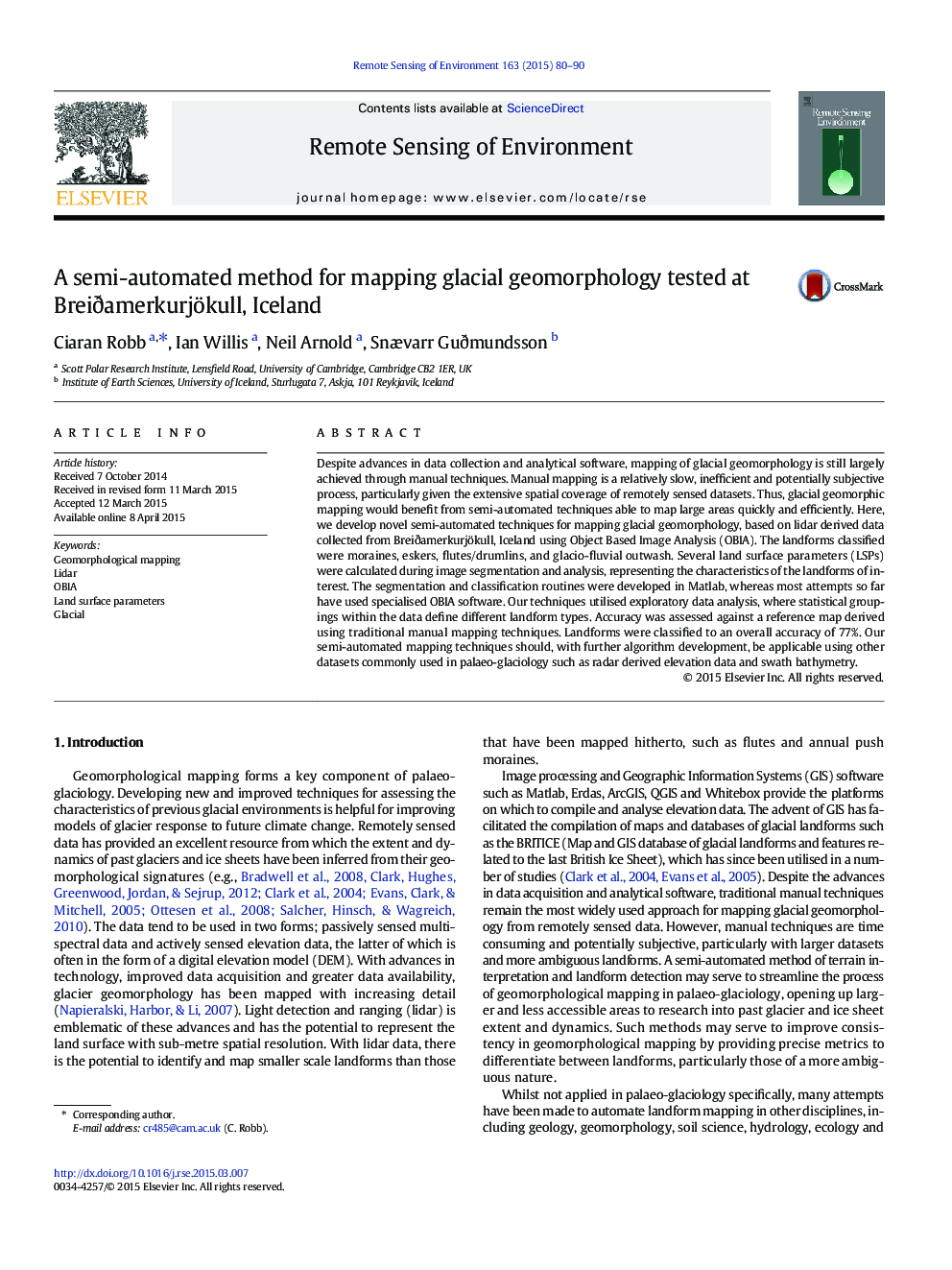| Article ID | Journal | Published Year | Pages | File Type |
|---|---|---|---|---|
| 6346099 | Remote Sensing of Environment | 2015 | 11 Pages |
Abstract
Despite advances in data collection and analytical software, mapping of glacial geomorphology is still largely achieved through manual techniques. Manual mapping is a relatively slow, inefficient and potentially subjective process, particularly given the extensive spatial coverage of remotely sensed datasets. Thus, glacial geomorphic mapping would benefit from semi-automated techniques able to map large areas quickly and efficiently. Here, we develop novel semi-automated techniques for mapping glacial geomorphology, based on lidar derived data collected from Breiðamerkurjökull, Iceland using Object Based Image Analysis (OBIA). The landforms classified were moraines, eskers, flutes/drumlins, and glacio-fluvial outwash. Several land surface parameters (LSPs) were calculated during image segmentation and analysis, representing the characteristics of the landforms of interest. The segmentation and classification routines were developed in Matlab, whereas most attempts so far have used specialised OBIA software. Our techniques utilised exploratory data analysis, where statistical groupings within the data define different landform types. Accuracy was assessed against a reference map derived using traditional manual mapping techniques. Landforms were classified to an overall accuracy of 77%. Our semi-automated mapping techniques should, with further algorithm development, be applicable using other datasets commonly used in palaeo-glaciology such as radar derived elevation data and swath bathymetry.
Related Topics
Physical Sciences and Engineering
Earth and Planetary Sciences
Computers in Earth Sciences
Authors
Ciaran Robb, Ian Willis, Neil Arnold, Snævarr Guðmundsson,
